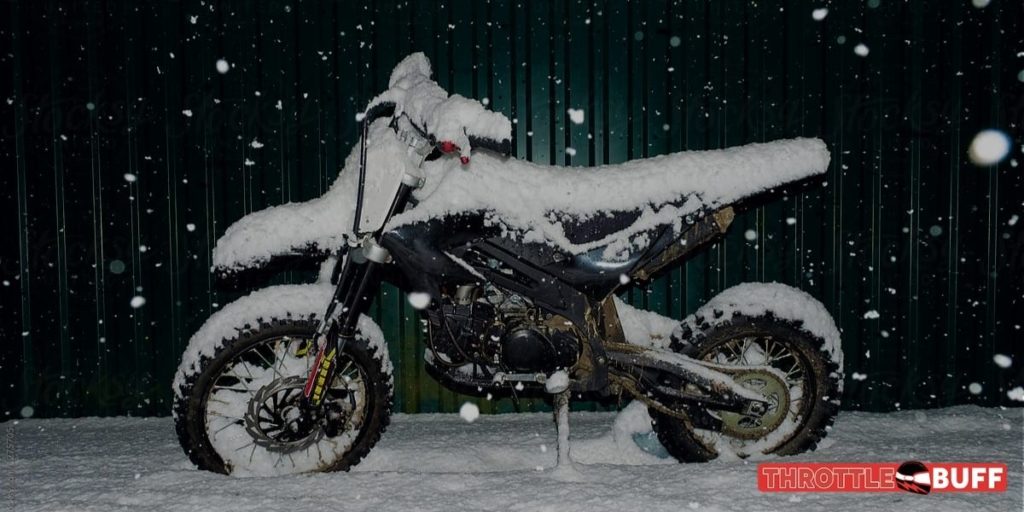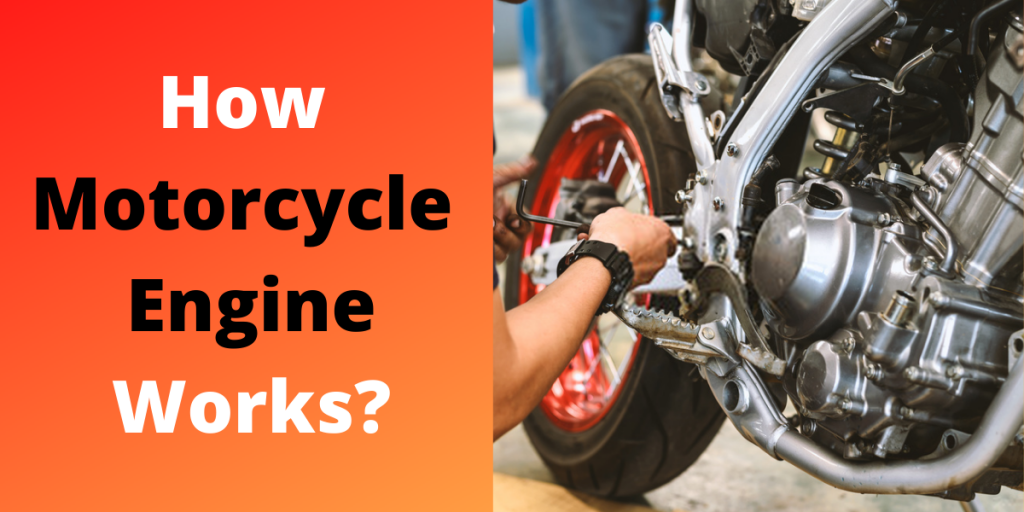As winter is around the corner, your bike needs special attention. As the weather cools and the snow begins to fall, most of us reluctantly store our bikes and look forward to riding again in the spring. However, putting your bike away for the winter isn’t as simple as putting a cover on it and getting in the car. Some maintenance needs to be done before storing your motorcycle for several months to keep it in peak working condition.
Suppose you correctly prepare your bike for winter storage. In that case, however, it will be much easier to get it functioning again when the riding season begins, and you will avoid any unpleasant surprises like dead batteries, corrosion, and rust patches.
Because moisture is your primary adversary during winter storage, most of our winterizing efforts will be focused on keeping it away from your bike. We’ll also pay attention to your fuel system, battery, tires, and all of your moving parts. We have listed some simple steps on how you can winterize your motorcycle.
So let’s get started!
Steps To Winterize A Motorcycle
1. Surface Preparation
Washing your bike when no one will see it for a few months is a bother, but it’s crucial to give it a thorough cleaning before storing it; allowing bug guts or water stains to linger on your paint will permanently erode the surface. Wash and dry your bike completely to remove all moisture from the surfaces. After that, add a coat of wax which will serve as a moisture and corrosion barrier. Finally, spray any exposed metal surfaces with WD-40 to remove any moisture and provide a corrosion-resistant coating.
2. Keep Changing The Oil and Filter
It’s time to change your oil and filter. Your lubrication system should have new oil in it for several months more than it is to have used, broken down oil in it, and the last thing you’ll want to do when the riding season starts is replacing the oil before you can go riding. Using a winter weight oil, such as 5W30, can also make it easier to start in the spring.
3. Lube The Moving Parts
Keeping moving parts lubed throughout the winter will prevent moisture from accumulating and causing corrosion or binding. Any portion of your motorcycle that requires lubrication should be lubed again before being stored. Chain drives, cables, controls, fork surfaces, and other pivot points should all be checked.
4. Prepare Your Fuel System
When gas tanks are not in use, they rust, and untreated pump gas degrades and turns sticky over time. To keep your fuel from rusting and ensure that it is ready to use after a few months in storage. A full tank will prevent moisture from forming on the tank walls, and adding the stabilizer before the short trip home will help mix the gas and stabilizer and run it through your fuel system before storage.
5. Safeguard The Battery
When batteries sit for an extended period, they have a tendency to self-discharge, especially if they are still connected to the bike. Connecting a battery tender, such as the Battery Tender Super Smart Junior, which employs smart technology to monitor the charge and maintain the battery topped off without overcharging, is the easiest approach to address this. Normally, the battery is removed from the bike for storage, but with a smart tender, you may connect the tender to the battery that is still in the bike. Ensure the electrodes are clean and corrosion-free before proceeding; if required, clean them and apply a little coating of grease.
6. Protect The Tires
If your tires are left in the same position for the entire winter, flat areas may form. You may avoid it by keeping the tires off the ground. Therefore if you have Motorcycle Stands, use them to store the bike. If you don’t have stands, attempt to lift at least the rear tire off the ground or rotate your tires every few weeks by rolling your motorcycle slightly. If you must leave your tires on concrete, cover them with a piece of carpet or plywood to prevent moisture from seeping in.
7. Check Antifreeze
If you’re going to store your bike somewhere where it’ll get below freezing, ensure your coolant system has enough antifreeze. This is critical; if you run straight water through your coolant system and it freezes, you may end up with a fractured head in the spring.
8. Make Bike Anti Pests
Mice and other rodents are known for hiding in exhaust pipes and constructing homes out of air filters to avoid the cold. Plug your pipes with an exhaust plug like the BikeMaster Rubber Muffler Plug to avoid any furry surprises when it’s time to ride again. You may also use some plastic bags to stuff your air intake, and exhaust pipe ends. However, use brightly colored bags or attach something to them, so you don’t forget to remove them before you start the bike.
9. Cover Your Bike
Invest in a suitable motorcycle cover once your motorcycle is properly prepared for the winter. A good motorcycle cover will not only keep dust off the bike but will also keep moisture out, preventing corrosion or rust from forming below it. If you’re going to store it outside, acquire a cover with tie-downs to keep it from blowing away in the wind. It will be in much better form if you keep it inside, but you should still cover it to prevent dust from accumulating.
10. Protect From Theft
If you’re storing your bike outside, keep in mind that it’s an easy target for theft if it’s left neglected for months. A cover will hide your bike from view while also protecting it from the elements, and locking it with a sturdy lock and chain will offer you peace of mind.
If You Are Planning To Ride It Out
So you’ve opted to ride your bike all winter congratulations. Much of the same applies to riding your bike in the winter as it does to store it.
First and foremost, you’ll need to clean your vehicle thoroughly and, if necessary, replace the oil and filter. By performing a service now, you can ensure that everything will work properly come the dismal middle of the winter. Next, use a corrosion inhibitor/protector like ACF50 to protect your bike and its electrics from the grit and dirt of the winter roads. Because it’s also a lubricant, don’t spray the brakes, handlebars, footpegs, or tires.
What should You do if you are storing your bike outside?
You would carefully house every motorcycle within a heated garage with a breathable, waterproof dust cover in an ideal world. However, not everyone has access to a garage or shed. If you’re in the latter group, keep these suggestions in mind:
- Bring your batteries and seats inside because they are the parts of your bike that are most affected by the cold. Preventing cracking on your seat is as simple as storing it indoors and treating it with vinyl protection. To keep your battery in good health between now and spring, use a fast connector to connect it to the maintainer/charger.
- Even though it may seem counterintuitive, if your motorcycle will be outside during the winter, it may be best to leave it exposed. A cover exposed to the outdoors might cause more harm than good by accumulating moisture and sticking it to your motorcycle.
Avoid using a tarp as a cover for your motorcycle, whether you’re storing it indoors or out. It may be convenient to have about the house, but it isn’t meant to get the job done. A proper motorbike cover is meant to breathe, whereas a tarp traps moisture.
We hope that our list of steps will help you to winterize your motorcycle this coming winter. If you have any other ideas, do let us know in the comment section.



